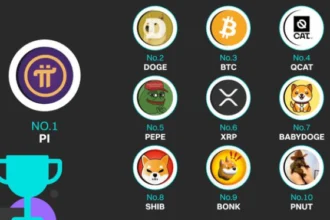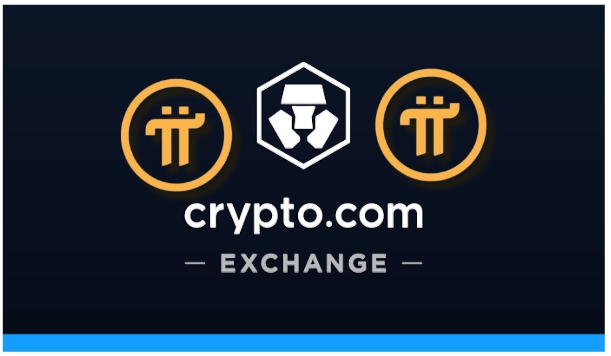The Pi Network, a cryptocurrency initiative that allows users to mine tokens through a mobile application, has stirred significant interest since its inception. The platform promises to democratize access to cryptocurrency by making mining easy and accessible for people worldwide. Pi Network was founded by a group of Stanford Ph.D. graduates, and its primary goal is to bring a decentralized digital currency that could be widely accessible without the technical and financial barriers traditionally associated with cryptocurrencies.
The anticipated transition to an open network in December 2024 marks a major milestone in Pi Network’s roadmap. This phase, often referred to as “Mainnet,” is expected to bring a fully decentralized blockchain that no longer relies on a centralized team or closed system, allowing Pi Coin (the currency on the network) to be freely transferable, used in real-world transactions, and traded on cryptocurrency exchanges. This shift promises to open up new opportunities and challenges for Pi users and the crypto space.
1. Understanding Pi Network’s Journey and Objectives
Pi Network launched in March 2019 with a vision to empower everyday people to participate in the cryptocurrency revolution by making mining easy and accessible. Unlike Bitcoin and Ethereum, which require specialized hardware to mine, Pi Network allows users to mine through a simple mobile app. By engaging in the network daily, users can mine Pi coins without needing extensive technical knowledge or significant energy consumption.
The network operates under a consensus algorithm called the Stellar Consensus Protocol (SCP), which requires far less energy than Proof-of-Work (PoW) algorithms. This protocol emphasizes trust and user participation, relying on a network of users who vouch for each other, rather than relying on computational power alone. By removing many of the entry barriers, Pi Network has amassed a substantial user base with over 40 million engaged users globally, as of 2024.
The open network phase represents the network’s transition from a closed environment, where transactions are confined within the ecosystem, to a fully decentralized and open blockchain, where Pi Coin can be transacted freely. This transition has been eagerly awaited by Pi Network’s supporters and is expected to bring both technical and economic changes to the ecosystem.
2. The Roadmap to Mainnet and Open Network
Pi Network’s development has been methodical, split into several phases to ensure the network’s stability and scalability:
- Phase 1: This phase focused on user acquisition and awareness. During this time, users could mine Pi tokens on their mobile devices and build trust circles to secure the network. However, transactions were limited to a simulated test environment.
- Phase 2: Known as the Testnet phase, this period allowed developers to test the network’s robustness. Selected developers could create and test applications within Pi Network, preparing the ecosystem for broader use cases. Transactions, however, were still limited and conducted within a sandboxed environment, separate from real-world economic systems.
- Phase 3: The open Mainnet or open network phase, which is anticipated in December 2024, will allow Pi Network to function as a fully decentralized blockchain. This phase will enable real transactions with Pi Coin outside the ecosystem, allowing it to be exchanged on major cryptocurrency exchanges and used in a broader range of applications.
The transition to the open network phase is intended to occur after significant testing and community input. The Pi Core Team has emphasized security, usability, and compliance with regulatory requirements. This process has not been without delays, leading some to question the feasibility of the open network launch. However, many supporters see these delays as evidence of the Pi Network’s commitment to a stable and functional ecosystem.
3. The Technical Aspects of Pi Network’s Open Network
The transition to an open network brings several technical changes that will impact Pi Network’s structure, scalability, and functionality.
Blockchain Decentralization and Security
One of the primary goals of the open network phase is to achieve full decentralization, ensuring that the network is secure and controlled by its users, not a centralized entity. By December 2024, Pi Network is expected to transition fully to a decentralized governance model that mirrors the principles of other successful blockchain networks, such as Bitcoin and Ethereum. This decentralization means that network security will rely on the distributed nodes run by Pi users worldwide.
Interoperability and Smart Contract Capabilities
The open network will also likely support interoperability with other blockchain networks and decentralized applications (dApps). Integrating smart contract capabilities will allow developers to build complex dApps within the Pi ecosystem, thereby enhancing the potential use cases of Pi Coin. These could include decentralized finance (DeFi) applications, NFT platforms, and other Web3 projects. The technical specifications of Pi Network’s smart contracts are still under wraps, but they are expected to leverage the Stellar Consensus Protocol, with potential for compatibility with popular coding languages in the blockchain space, such as Solidity and Rust.
Scalability and Energy Efficiency
Pi Network’s commitment to environmental sustainability through energy-efficient mining practices is expected to continue. Unlike traditional mining processes that consume substantial energy, Pi Network’s protocol leverages the SCP, which only requires a user’s engagement, not extensive computational resources. This approach is anticipated to support scalability as more users join the network and as Pi transactions become available in the open market.
4. The Economic Implications of the Open Network
The open network phase represents a turning point for Pi Network’s economic model, enabling Pi Coin to become a tradable asset and medium of exchange.
Market Dynamics and Trading Potential
The most anticipated feature of the open network is Pi Coin’s trading potential on cryptocurrency exchanges. By opening the network, Pi Coin will enter the free market, where its value will be determined by supply and demand dynamics. This development is expected to increase Pi Coin’s liquidity, as users can now exchange their Pi holdings for other assets, including fiat currencies.
However, the initial market response remains uncertain. Since millions of users have been mining Pi for several years, there is an abundant supply of Pi Coins, which could lead to initial price volatility. The Pi Core Team has implemented measures to limit rapid dumping and price crashes, such as phased releases and transaction limits, to foster a balanced market.
Use Cases and Economic Value
For Pi Coin to hold value in the long term, it must establish utility beyond speculative trading. The open network phase allows Pi Coin to be used as a medium of exchange within and beyond the Pi ecosystem. In the Testnet phase, Pi Network users could conduct peer-to-peer transactions and purchase goods and services from businesses within the Pi ecosystem. The open network phase aims to expand these use cases by allowing users to transact with Pi in the broader market, potentially including partnerships with established businesses and marketplaces.
By integrating Pi Coin into more commercial and decentralized finance applications, the network can drive adoption and economic activity. The Pi Core Team has also proposed creating a developer ecosystem to foster innovative use cases for Pi, encouraging third-party developers to create applications that accept Pi Coin as payment. This strategy could bolster Pi’s real-world value, making it more than just a digital asset.
5. Potential Challenges and Risks in the Open Network Phase
The transition to an open network, while exciting, is not without challenges. Several risks could affect the successful implementation of Pi Network’s open Mainnet.
Market Volatility and Speculation
Upon launching in the open market, Pi Coin may be subject to high volatility. While early adopters may be eager to trade their Pi, the value of the coin will depend on market demand and perceived utility. If the supply of Pi Coins far exceeds demand, it could lead to a depreciation of the currency’s value. Conversely, if demand surges, the price could rise sharply, drawing more speculative interest, which could lead to increased volatility.
Regulatory Scrutiny
As a decentralized network, Pi Network faces potential regulatory scrutiny as authorities worldwide intensify oversight of cryptocurrencies. Compliance with local regulations may impact the open network’s reach in certain regions. For example, some countries have strict rules regarding crypto assets, and Pi Network may face limitations in such jurisdictions. The Pi Core Team has expressed a commitment to regulatory compliance, but the complexity of this process could affect Pi Coin’s global adoption.
Technical and Security Risks
The transition to an open, decentralized network may present security risks. Decentralized networks, particularly new ones, are susceptible to attacks from bad actors. While the Pi Core Team has likely taken extensive measures to secure the network, new vulnerabilities could emerge as it scales. Moreover, user education will be crucial to ensure that participants follow best practices, such as safeguarding private keys.
6. The Future of Pi Network and Its Community
The December 2024 launch of Pi Network’s open network will likely mark a defining moment in the project’s journey. By unlocking new opportunities for trading, commerce, and development, Pi Network has the potential to become a meaningful player in the crypto space. However, much will depend on how well the network handles the challenges of decentralization, regulatory scrutiny, and adoption.
The success of Pi Network’s open network phase will hinge on user engagement and the development of meaningful applications. As more developers build dApps and as businesses begin to accept Pi Coin, the ecosystem may grow and thrive. The Pi Core Team has also emphasized the importance of community governance, suggesting that Pi Network’s future direction will be shaped by its users.
If the transition is successful, Pi Network’s open network phase could lay the foundation for a global, accessible cryptocurrency that aligns with the ideals of decentralization and financial inclusion. The journey from a mobile mining app to a fully decentralized cryptocurrency network is a bold experiment, and the December 2024 open network launch will provide a glimpse into the viability and future impact of Pi Network. Continue Reading
















